The Siuslaw School District wants community input on plans to replace the high school and renovate the elementary school.
Discover the latest breakthroughs, ethical considerations, and societal implications as we navigate this exciting journey…
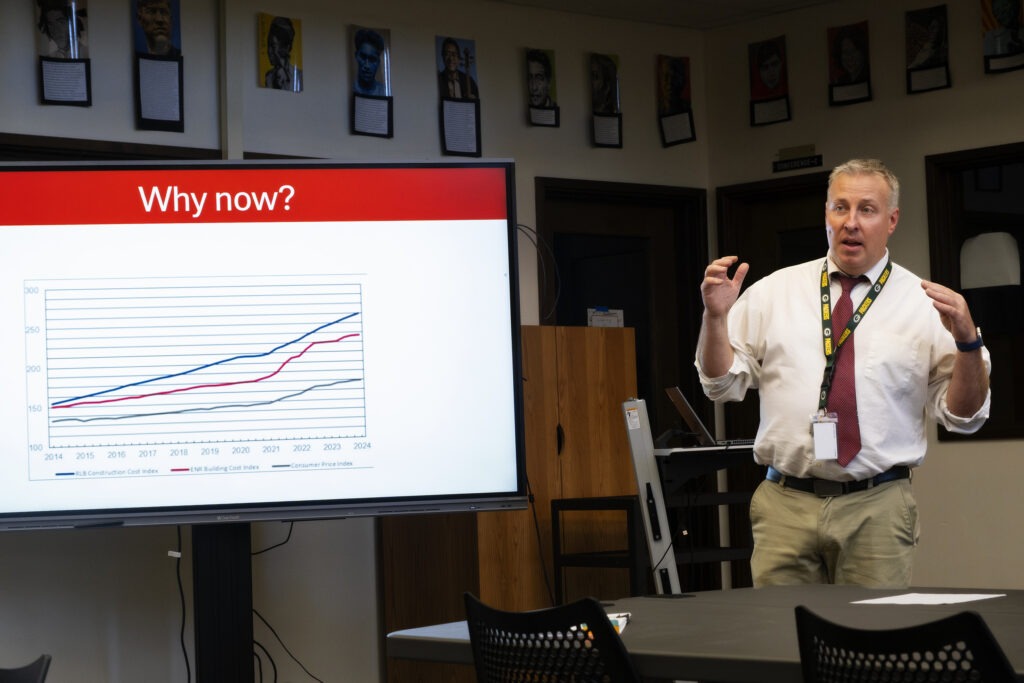
Written and photographed
by Will Yurman
CORRECTION: In an early version of the story, Principal Harklerode said property taxes are the only way to pay for school construction. In a follow-up email, he offered a clarification. “Property taxes actually pay for operations. Bonds are what allow for construction,” he said.
STORY UPDATED: The comments from Celia Duman, reflecting her skepticism about the project, have been added to the earlier version of the story. Duman wasn’t available to speak until after the story was initially published.
The school district is considering plans to replace the aging Siuslaw High School. The current 110,000-square-foot building was constructed in 1970.
The school district’s Facilities Advisory Committee for School Improvements is holding informational sessions for the public to gather input and build support for the project before presenting its recommendation to the school board. The committee may also recommend renovations to the elementary school. The school board will then decide whether to put a bond measure on the ballot.
The facilities committee has spent 18 months developing its recommendations, working with architect Curt Wilson. “He’s the one who organized the team of engineers and architects to come through the school to make their recommendations,” High School Principal Mike Harklerode said.
The process looked at the costs of renovation versus replacement. The committee concluded that the cost of renovating the existing high school structure would be too expensive and would still leave the facility with its existing shortcomings, Harklerode said.
The district last approved a bond in 1999 to build a new middle school. Bond measures for the high school and elementary school were defeated in 2016 and 2018.
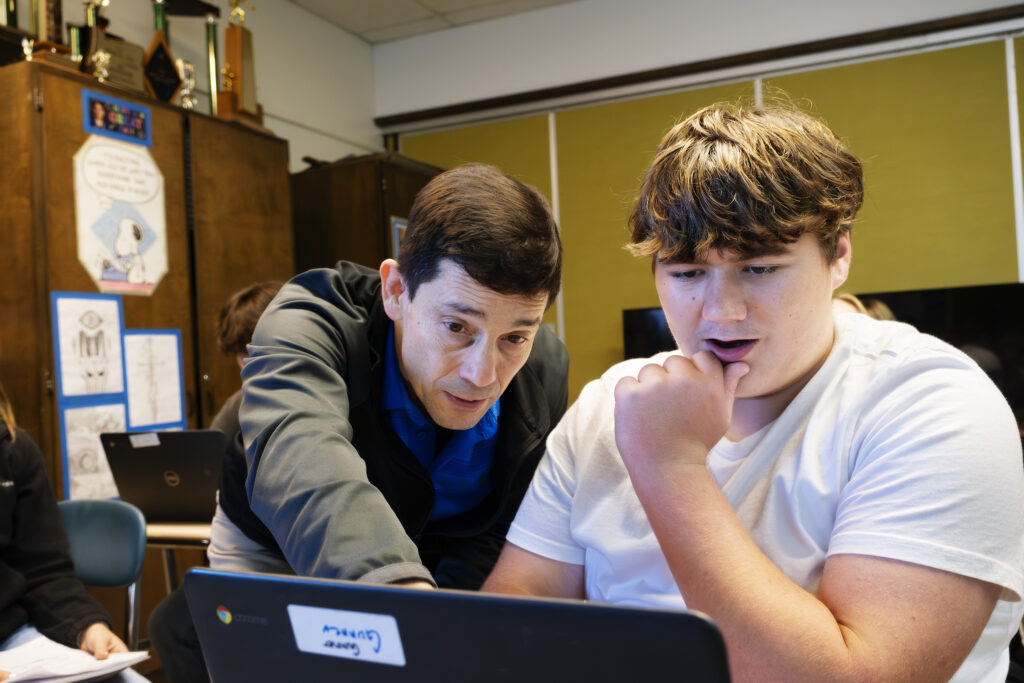
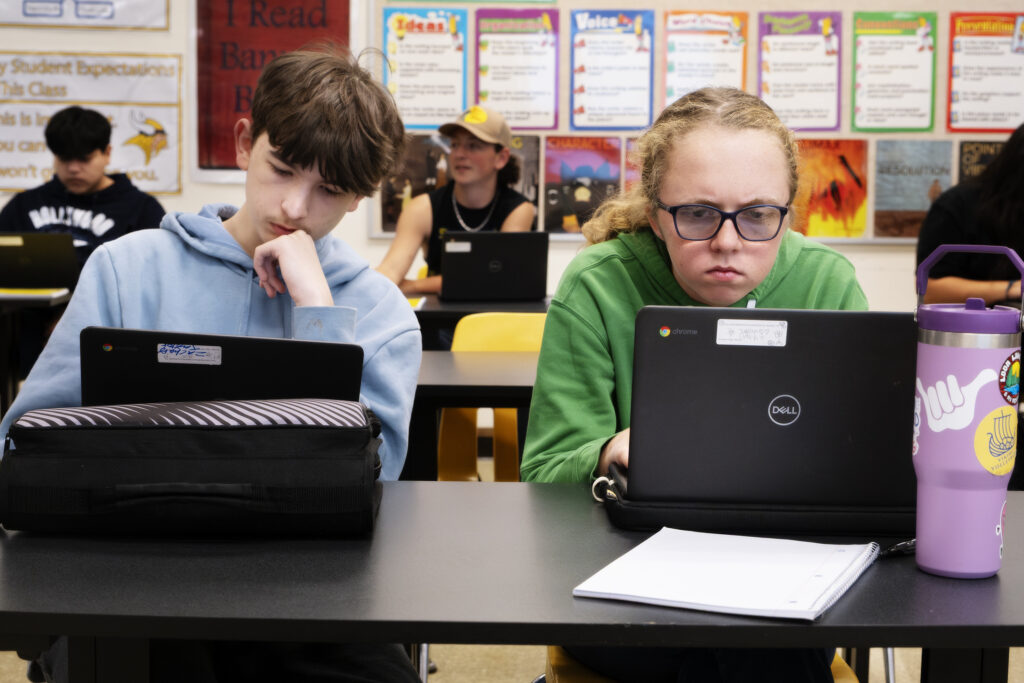
Harklerode, who has been principal of the high school for five years and in the district for the past sixteen years, described multiple issues with the existing high school.
It is not up to code for earthquakes. In fact, it was built before there were seismic codes, he said.
Its design is outdated for current teaching methods and best practices. Classrooms are too small and not designed for current technology.
There is no dedicated cafeteria. The open space in the center of the school, which serves as a cafeteria, is too small, so the school has an open campus policy, allowing students to leave – and many do – swarming to the parking lot and heading off campus at lunchtime.
“I would love to be able to close campus for lunch. I think it would fix our attendance concerns if we could say, ‘Hey, we got a free meal here for you. Let’s just stay here for lunch,’” Harklerode said.
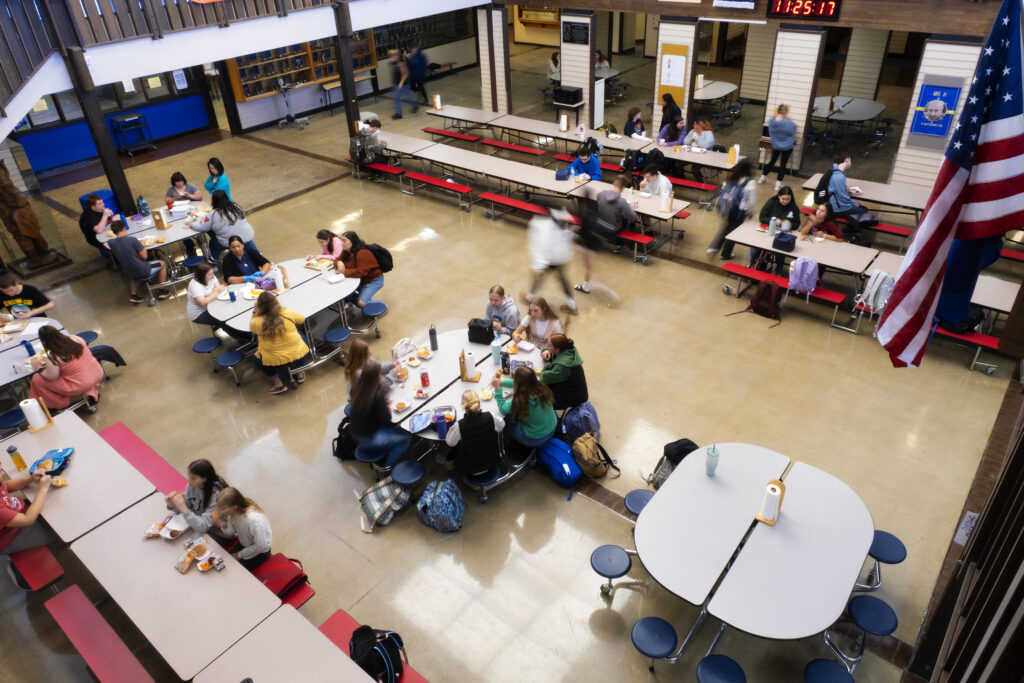
And the building’s facilities are old. Replacement parts can be difficult to find, and systems break down frequently.
The committee has developed two options for a new high school, as well as a renovation plan for the elementary school.
Option One for the high school is a 174,500-square-foot building estimated to cost around $122.7 million. The committee says the building would provide larger classrooms, improved security, lower maintenance costs, and a more reliable building overall. This more expensive option also allows for growth as the community grows over the coming decades, Harklerode said. Both high school options include an auditorium.
Option Two would be a 156,000-square-foot building, estimated to cost around $110.3 million. The scaled-down school would allow for less growth in the future. Other differences include one less classroom and a smaller proposed auditorium.
The elementary school proposal would renovate the oldest section of the school and add new classrooms inside the building. Current kindergarten classrooms are separate from the main school. The estimated cost of this project is $13.7 million.
What will it cost?
The cost to a homeowner in the school district would be based on the assessed value of the home, not the market value. The committee’s current proposals range from $2.65 to $3 per $1,000 of the assessed value. Find the assessed value of your home.
For the median home in the district, assessed at $232,689, the bond would cost $47.15 to $58.15 per month, depending on which plan is adopted. The least expensive plan would be Option Two for the high school, with no renovation to the elementary school and would cost the average homeowner $565 per year over 30 years. The most expensive plan, Option One and the elementary school renovation, would cost the average homeowner about $700 per year over the 30-year life of the bond.
Harklerode is quick to agree it is a lot of money. But he argues it is an investment in our community. “Schools are an integral part of a community’s infrastructure,” he said. And good schools make it easier to attract doctors and other professionals to the community.
“Public schools are a local responsibility. They’re a federal interest, they’re a state priority, but it’s a local responsibility to invest in schools.” Local construction bonds are the only way to fund a new school, he said.
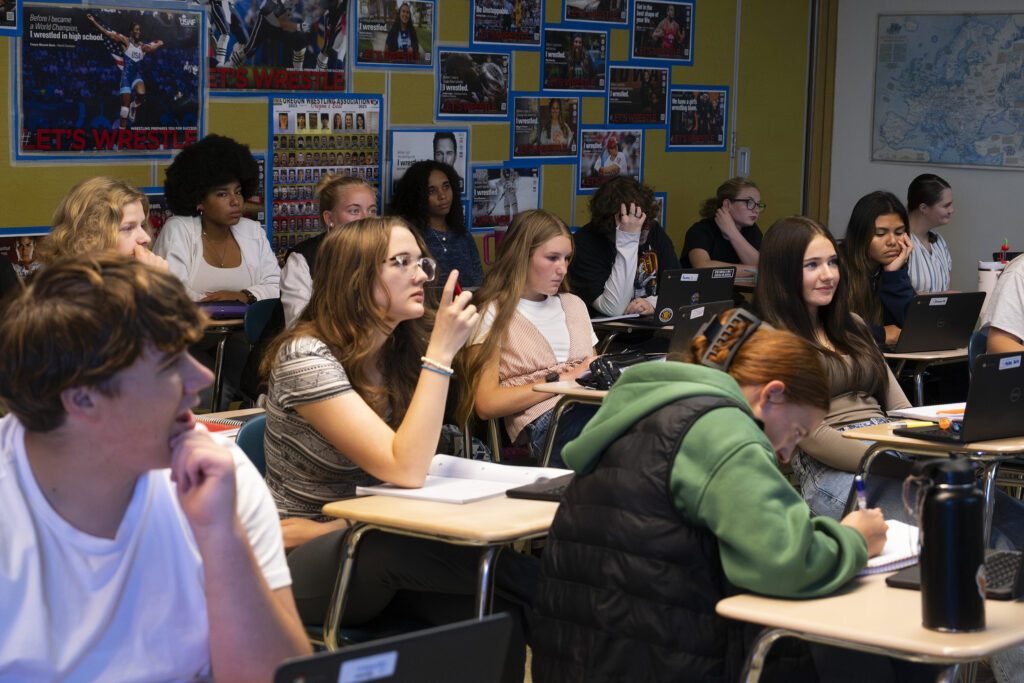
On Tuesday, September 16, the committee held the first of a series of public information sessions. Three more public meetings are scheduled, with plans to add more meetings over the coming months. Harklerode said the committee hopes to bring the proposal before the school board for a vote in February. And the bond measure could go to the voters in May.
Emma Muehle was at the September 16 session and supports the idea of a bond. Muehle is the mother of a fifth and sixth-grader in the district and has no doubt that the district needs a new building. “I think it’s extremely necessary and long overdue,” she said.
She does worry about people on a fixed income and understands why they might oppose an increase to their tax bill, but sees the schools benefiting the whole community. “We should go ahead and invest big,” so we are prepared for a growing community, she said, endorsing the larger school option.
Celia Duman was at the meeting as well. She is skeptical about the proposal for a new high school. “I’m just not completely convinced that the problems can’t be fixed with a remodel,” she said a few days after the meeting. “Groceries aren’t cheap. People who rent are going to see their rents go up,” she said.
Duman and her husband have a first-grader, a preschooler, and a third child on the way. They estimate that the bond would increase the tax bill on their house by nearly 30%. The plans for an auditorium sounded extravagant to her. “It would be wonderful, but it’s a lot of money. Is it really worth it?” she asked.
She is still undecided and plans to go to future meetings in search of answers to her concerns. “I want what’s best for our kids, but I also want what’s best for our community, and money is tight right now.”
If the bond measure passes, Harklerode estimated it would take three years to design and build the new high school.
If the measure fails, the district will need to spend an increasing amount of its maintenance budget to keep the high school functional, he said. And the risk of a major system failure will continue to grow. “We’re running the risk of a cataclysmic failure in one of the systems.” Harklerode said the district was lucky last winter when they had to close the school for just four days due to a heating system failure. Next time could be much longer, he said.
PUBLIC MEETING SCHEDULE
The public meetings are free and open to the community. Meetings held at the high school include a tour of the school.
Saturday, September 27 @ 10 a.m. at the Siuslaw Public Library
Wednesday, October 1@ 6 p.m. at the Siuslaw High School Library
Monday, November 10 @ 11 a.m. at the Siuslaw High School Library
